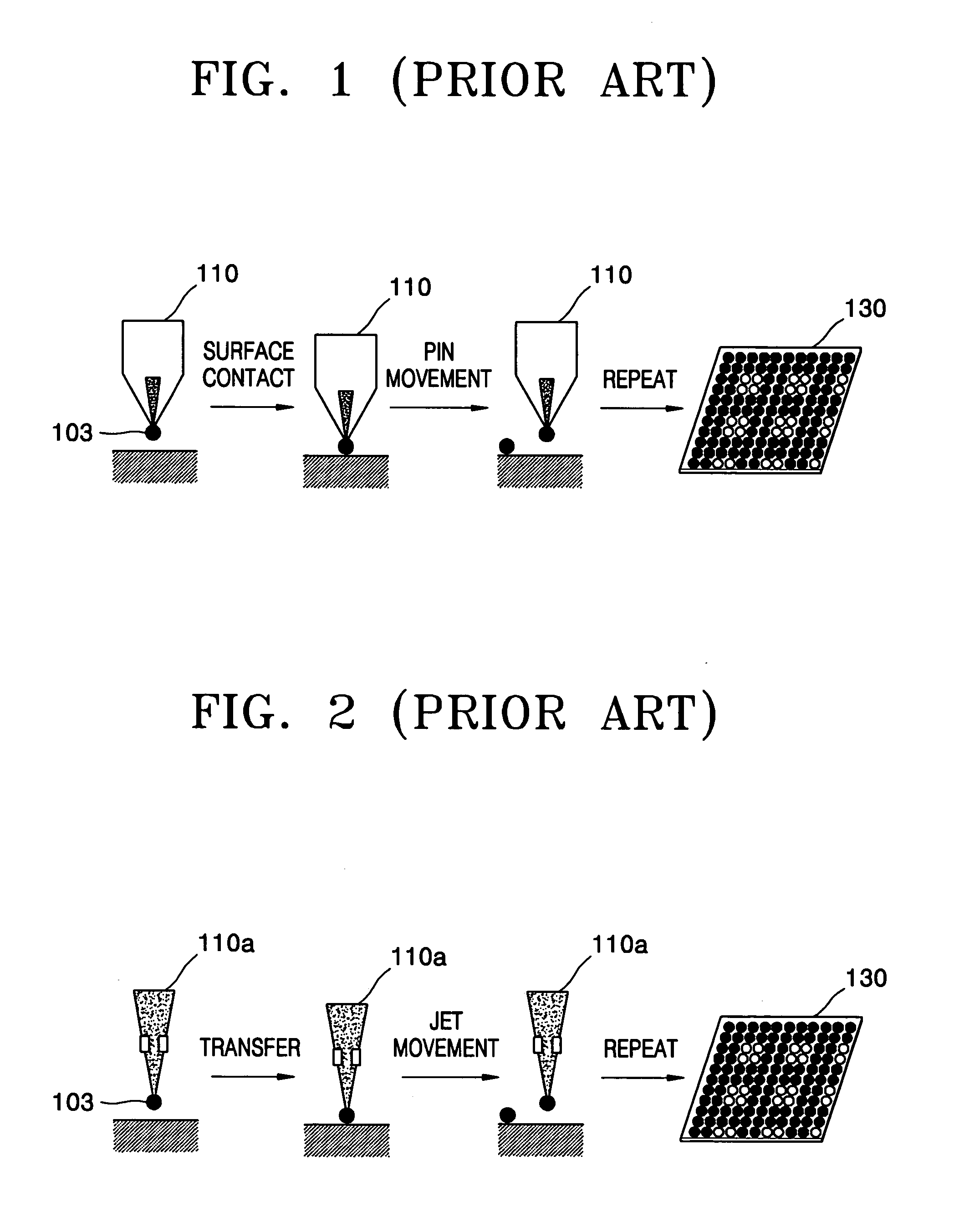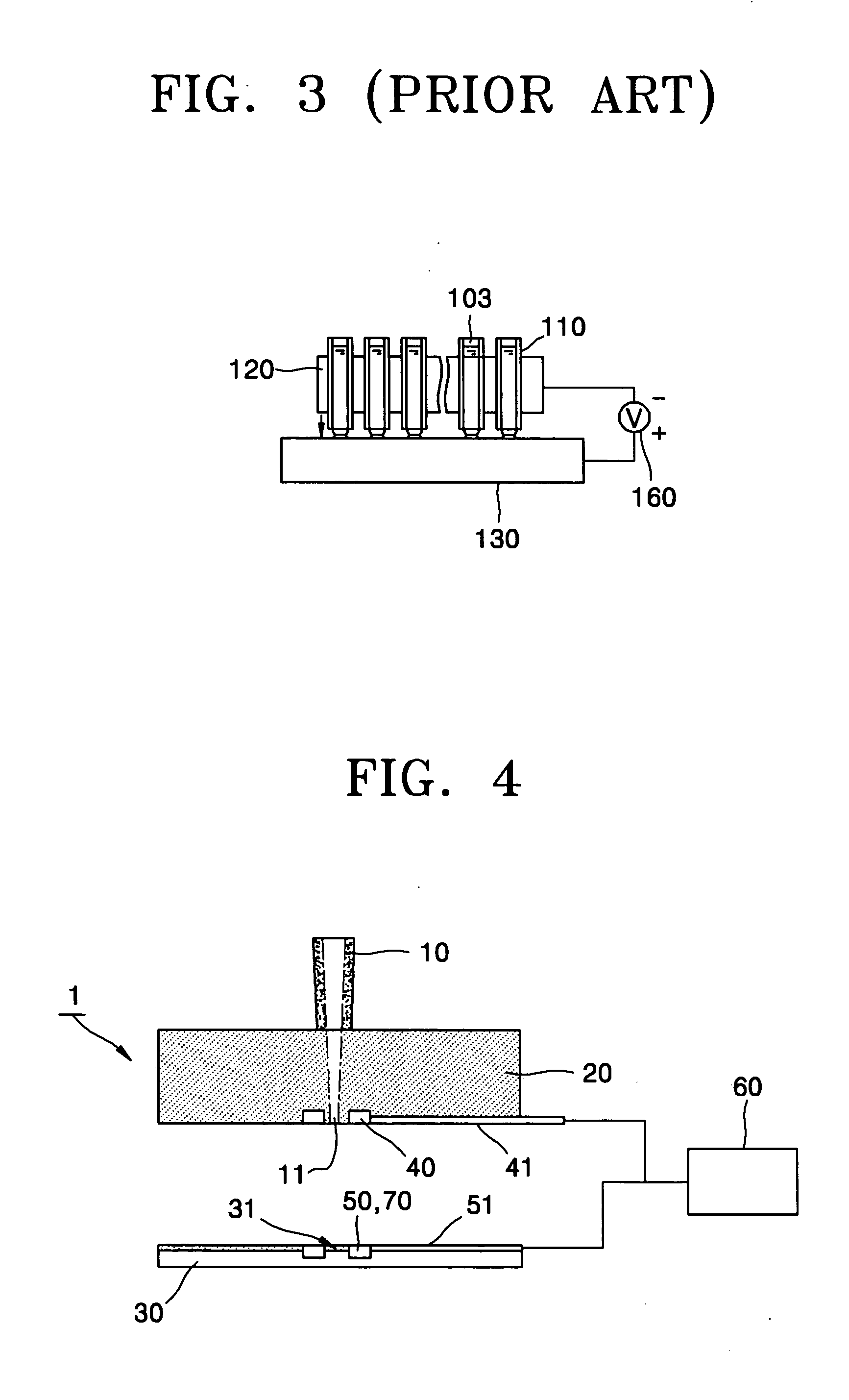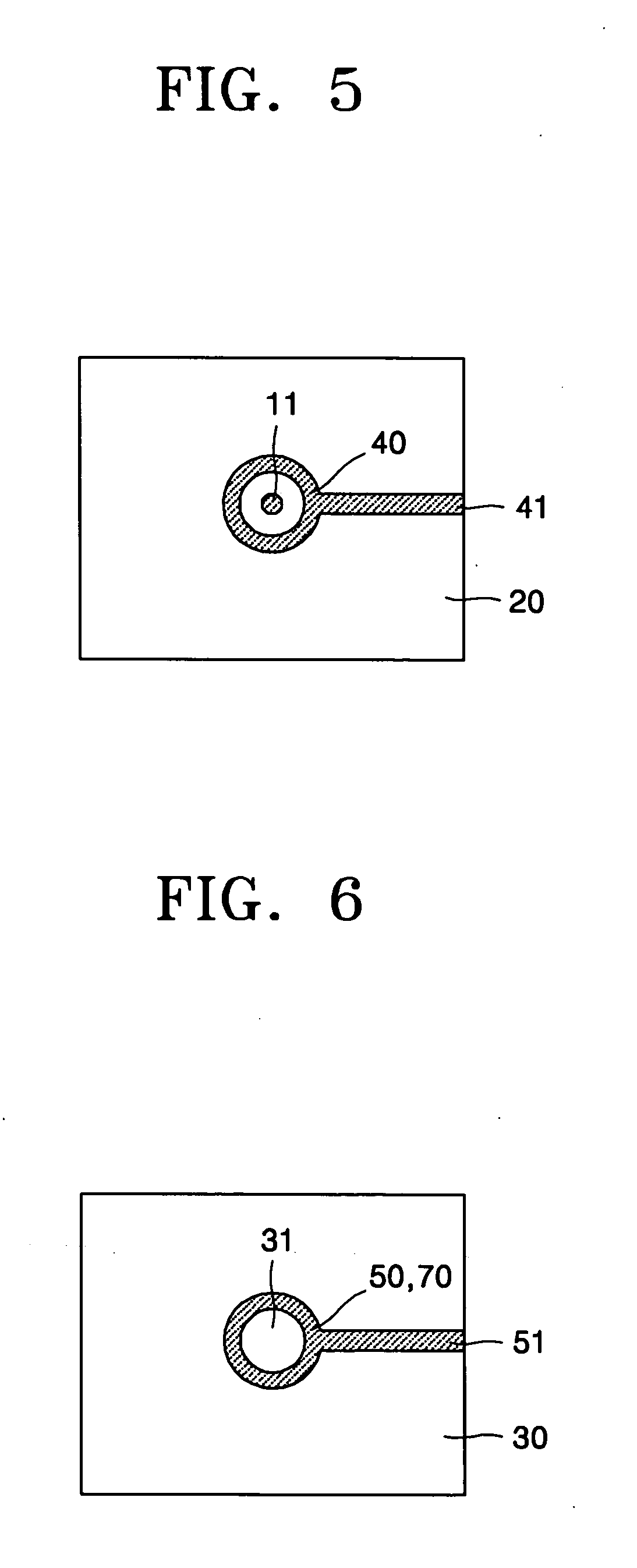Device and method for printing biomolecules onto substrate using electrohydrodynamic effect
a biomolecule and electrohydrodynamic technology, applied in the field of devices and methods for printing biomolecules onto substrates using electrohydrodynamic effect, can solve the problems of not being able to analyze a large number of genes, requiring a lot of time, labor, skill and expense, and the method using pins is not easy to use, so as to achieve quick processing and easy alignment
- Summary
- Abstract
- Description
- Claims
- Application Information
AI Technical Summary
Benefits of technology
Problems solved by technology
Method used
Image
Examples
embodiment 1
[0077] The printer body 20 was manufactured using polymethlymethacrylate (PMMA) and the circular conductive band 70 around the outlet 11 was made of copper, as illustrated FIG. 5. The voltage applying unit 60 was manufactured in the lab to apply DC and AC voltages simultaneously. The device for printing the biomolecule solution onto a substrate using an EHD effect was manufactured as illustrated in FIG. 4.
[0078] The experiments were performed with distilled water, a probe DNA solution, and a solution of protein, HBV antibody.
[0079] First, printing was performed with distilled water. Voltage from the voltage applying unit 60 was applied using the lower electrode as a ground electrode and the upper electrode as a working electrode. The voltage was set to 1000 V DC and 1000 V AC at 50 Hz and when a droplet was formed as illustrated in FIG. 17A, the voltage was applied to the electrodes. The phenomenon of the biomolecule solution drops was photographed using Frame Grabber. The shape o...
embodiment 2
[0082] The device for printing biomolecules onto a substrate using an EHD effect according to the embodiment as illustrated in FIG. 13 was manufactured. The experiments were performed with distilled water, a probe DNA solution, and a solution of protein, HBV antibody as in the Embodiment 1.
[0083] First, EHD printing was performed with distilled water. Voltage from the voltage applying unit 60 was applied using the lower electrode as a ground electrode and the upper electrode as a working electrode. The voltage was set to 1000 V DC and 2000V AC at 50 Hz and when a droplet was formed as illustrated in FIG. 18A, the voltage was applied to the electrodes. The phenomenon of the biomolecule solution drops was photographed using Frame Grabber. FIG. 18B illustrates the droplet at the moment when the EDH effect began and FIG. 18C illustrates the shape of the droplet beginning to be changed by the EDH effect. FIG. 18D captures the state of droplet of changing shape. The necking of droplet by...
embodiment 3
[0086] The device for printing biomolecules onto a substrate using an EHD effect according to the embodiment as illustrated in FIG. 16 was manufactured. The experiments were performed with distilled water, a probe DNA solution, and a solution of protein, HBV antibody as in the Embodiment 1.
[0087] First, EHD printing was performed with distilled water. Voltage from the voltage applying unit 60 was applied using the lower electrode as a ground electrode and the upper electrode as a working electrode. The voltage was set to 1000 V DC and 2500V AC at 50 Hz and when a droplet was formed as illustrated in FIG. 19A, the voltage was applied to the electrodes. The phenomenon of the biomolecule solution drops was photographed using Frame Grabber. This time, the droplet was completely divided from the solution as illustrated in FIG. 19B within several microseconds.
[0088] Secondly, the experiment was performed with probe DNA. For this, perfect matched probe DNA oligomer (WP MODY3 EXON 3-6, C6...
PUM
| Property | Measurement | Unit |
|---|---|---|
| Electric potential / voltage | aaaaa | aaaaa |
| Frequency | aaaaa | aaaaa |
| Current | aaaaa | aaaaa |
Abstract
Description
Claims
Application Information
 Login to View More
Login to View More - R&D
- Intellectual Property
- Life Sciences
- Materials
- Tech Scout
- Unparalleled Data Quality
- Higher Quality Content
- 60% Fewer Hallucinations
Browse by: Latest US Patents, China's latest patents, Technical Efficacy Thesaurus, Application Domain, Technology Topic, Popular Technical Reports.
© 2025 PatSnap. All rights reserved.Legal|Privacy policy|Modern Slavery Act Transparency Statement|Sitemap|About US| Contact US: help@patsnap.com



